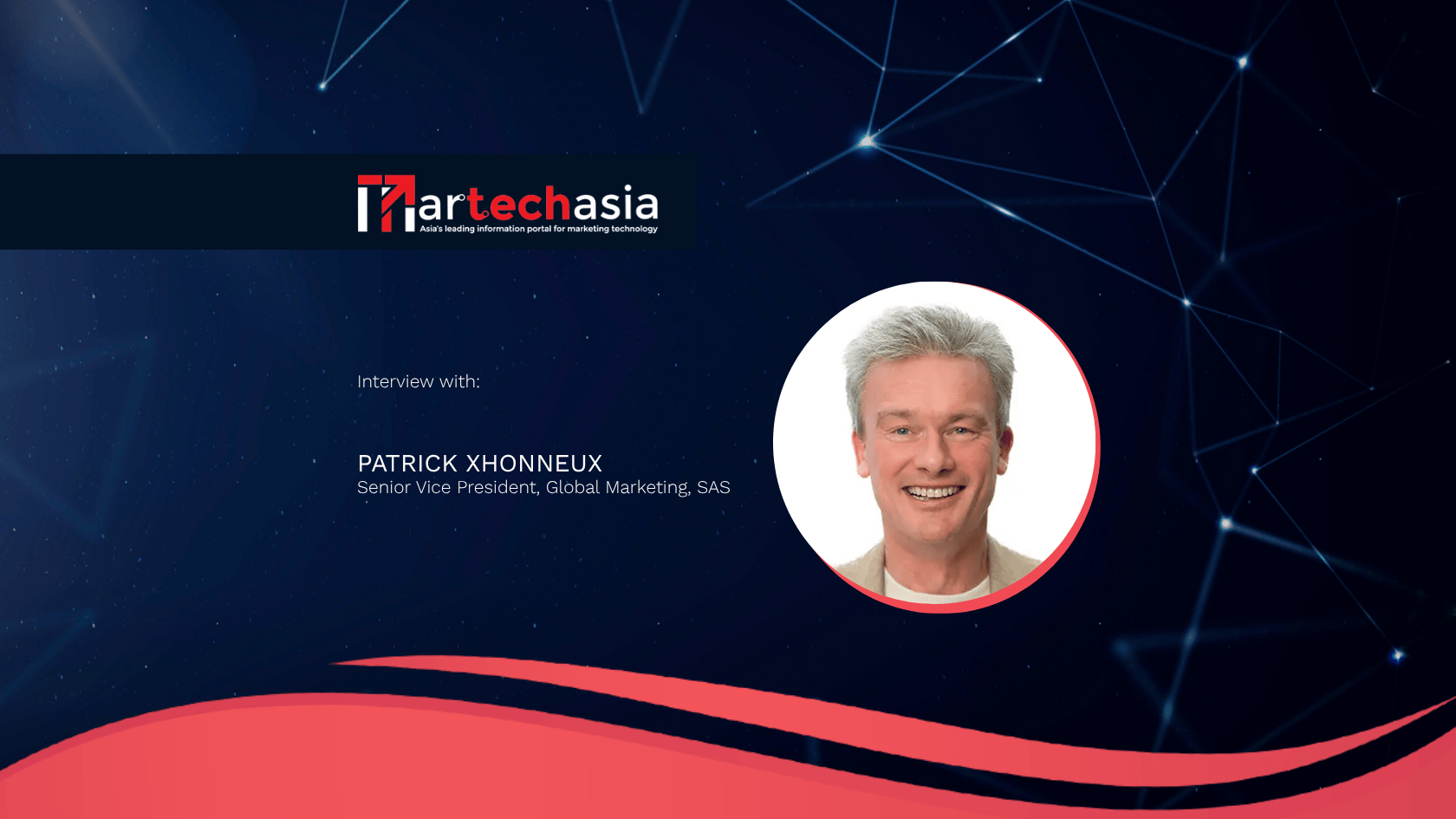How AI, automation and data analytics are put into action in the marketing and sales processes of organizations in Asia Pacific.
Patrick Xhonneux, Senior Vice President, Global Marketing, SAS, shares with MartechAsia how AI, data and analytics can be wielded responsibly as precise and purposeful MarTech tools to empower marketers in Asia Pacific:
What are the top use cases of AI and automation in marketing?
Patrick Xhonneux (PX): When MarTech is wielded with precision and purpose, it empowers marketers to orchestrate experiences that earn trust and deliver real value.
According to the Harvard Business Review Analytic Services survey highlighted by SAS, 81% of marketing leaders believe that modern MarTech significantly—or at least moderately—enhances their ability to foster customer trust.
- SBI General Insurance – turning data into decisions, and decisions into customer loyalty
SBI General Insurance, one of the largest general insurance organisations in India, has transformed its marketing with SAS Customer Intelligence 360 (CI360), deployed in a hybrid cloud setup to balance regulatory compliance with agility.
By unifying customer data across touchpoints and applying AI-driven segmentation, the insurer delivers personalised, real-time engagement across digital and offline channels.
The results have been significant: conversion rates improved by 4–8%, customer engagement rose by 20–25%, and retention increased by 4–7%. Campaign execution that previously took more than 20 days can be activated almost instantly, achieving a 400% acceleration in time-to-market. End-to-end automation has also delivered a fourfold gain in operational efficiency.
By combining AI, automation, and compliance-friendly architecture, SBI General has achieved faster speed-to-market, higher customer lifetime value, and stronger long-term trust.
Trust is built through use cases that truly matter with real-time identity and customer understanding, advanced segmentation and targeting, streamlined audience activation, and predictive insights & analytics. In essence, AI and automation are transforming marketing from sporadic engagement to persistent, personalised engagement that amplifies trust—and drives outcomes.
What are some of the challenges marketers face when integrating new technologies like Generative AI and Agentic AI into their existing MarTech stacks, and how can they overcome these obstacles?
PX: Integrating new technologies like Generative AI and Agentic AI into existing MarTech stacks presents several challenges for marketers:
- Data Quality and Integration: Many organisations struggle with fragmented or siloed customer data, making it difficult to feed AI models with consistent, high-quality information. Overcoming this requires robust data governance, unified customer profiles, and platforms that can seamlessly integrate multiple data sources.
- Model Explainability and Trust: Generative and Agentic AI can produce outputs that are difficult to interpret or explain, creating a barrier to adoption and raising ethical concerns. Marketers can address this by implementing explainable AI practices, monitoring model outputs, and ensuring human oversight in decision-making loops.
- Technology Complexity: AI models can be resource-intensive and require specialised skills to deploy and maintain. Organisations can overcome this by leveraging embedded AI within existing MarTech solutions, low-code/no-code interfaces, and vendor-supported AI operations (ModelOps) that simplify deployment and management.
- Governance, Compliance, and Privacy: Using AI responsibly demands strict adherence to privacy regulations and internal policies. Marketers should establish clear AI governance frameworks, maintain transparent customer data practices, and adopt privacy-by-design principles to protect customer trust.
- Balancing Automation with Human Creativity: While AI can generate insights, content, or customer journeys, it cannot fully replace the human intuition needed for brand storytelling. Marketers need to blend AI efficiency with human creativity, using AI to augment decision-making rather than automate it entirely.
In practice, overcoming these obstacles involves a combination of robust data infrastructure, responsible AI governance, transparent and explainable AI models, and a culture that balances AI-driven automation with human oversight. This allows marketers to unlock the benefits of AI—personalisation at scale, predictive decisioning, and enhanced customer experiences—without compromising trust or control.
To succeed, marketers must go beyond creativity or data alone. They need to understand evolving customer behaviours, challenge assumptions, and embrace new measures of success. It starts with asking different questions, using the right data for the right answers, and building engagement programs that align with maturing expectations and values.
How does responsible marketing that leverages AI look like in practice?
PX: Responsible marketing with AI is about using technology in a way that strengthens customer trust rather than undermines it. That begins with ethical practices such as model cards, which document an AI model’s performance, intended use, and potential biases — providing transparency and accountability. Model cards are similar to nutrition labels used in the food industry: they tell you how healthy your AI model is.
Transparency in customer intelligence is going beyond regulatory compliance (like GDPR) to provide explainability — the “why” behind data use — so customers feel informed and in control of their data.
Organisations can use AI to deliver personalised, predictive marketing experiences that balance relevance with responsibility. This includes applying governance standards, human oversight, and strong data privacy principles to avoid disparate impacts and ensure fairness.
For example, SAS 360 Match, our first-party ad server, enables companies to plan, manage, and optimise digital ad inventory while supporting retail media networks and dynamic ad personalisation — without resorting to invasive tactics like repetitive cross-channel chasing. Instead, brands can design thoughtful, value-adding customer journeys where timing, context, and message align naturally with customer needs.
In a nutshell and rather than chasing customers across channels with repetitive ads, brands can now design tailored journeys — where timing, context, and message add value to the customer’s life.
That also explains why SAS is the only vendor to appear in The Forrester WaveTM Cross-Channel Marketing Hub evaluation for 15 consecutive years.


















